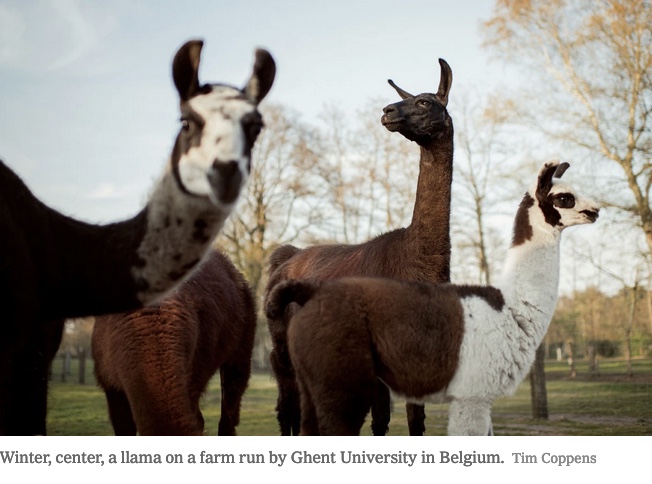Winter is a 4-year-old chocolate-colored llama with spindly legs, ever-so-slightly askew ears and envy-inducing eyelashes. Some scientists hope she might be an important figure in the fight against the novel coronavirus.
She is not a superpowered camelid. Winter was simply the lucky llama chosen by researchers in Belgium, where she lives, to participate in a series of virus studies involving both SARS and MERS. Finding that her antibodies staved off those infections, the scientists posited that those same antibodies could also neutralize the new virus that causes Covid-19. They were right, and published their results Tuesday in the journal Cell.
Scientists have long turned to llamas for antibody research. In the last decade, for example, scientists have used llamas’ antibodies in H.I.V. and influenza research, finding promising therapies for both viruses.
Humans produce only one kind of antibody, made of two types of protein chains — heavy and light — that together form a Y shape. Heavy-chain proteins span the entire Y, while light-chain proteins touch only the Y’s arms. Llamas, on the other hand, produce two types of antibodies. One of those antibodies is similar in size and constitution to human antibodies. But the other is much smaller; it’s only about 25 percent the size of human antibodies. The llama’s antibody still forms a Y, but its arms are much shorter because it doesn’t have any light-chain proteins.
This more diminutive antibody can access tinier pockets and crevices on spike proteins — the proteins that allow viruses like the novel coronavirus to break into host cells and infect us — that human antibodies cannot. That can make it more effective in neutralizing viruses.




